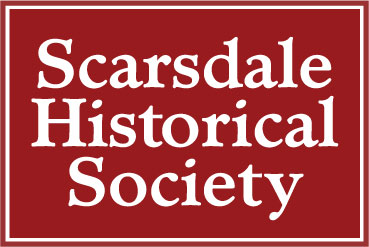The Reverend Dr. Martin Luther King Jr. is praised around the world for his work fighting for interracial harmony, civil and voting rights, and an end to racial segregation. As an advocate of non-violence, Dr. King was awarded a Nobel Peace Prize just four years before his life was cut short by an assassin's bullet on April 4, 1968.
Dr. King spoke throughout the country, and many Scarsdale residents may be unaware that he visited Westchester County several times between 1956 and 1967. Although Dr. King is widely celebrated today, he was very unpopular in many regions of the country, including Westchester, during the heyday of The Civil Rights Movement. He was denounced as a socialist for his anti-poverty campaign and opposition to the Vietnam War. However, some forward thinking people from Scarsdale realized that the struggle for justice was not limited to the Southern United States and were eager to support and spread Dr. King’s message. Two of Dr. King’s visits were arranged by Scarsdale residents active in the fight for civil rights.
On March 31, 1960, Dr. Martin Luther King Jr. delivered a version of his famous and controversial sermon, Love Your Enemies, to an overflow crowd at the Scarsdale Community Baptist Church at 51 Popham Road in Scarsdale. According to journalist Andy Bass, who wrote about Dr. King’s visits in The Westchester Historian (Spring 2018), the Reverend M. Forest Ashbrook was instrumental in bringing Dr. Martin Luther King Jr. to Scarsdale in 1960. Rev. Ashbrook was a resident of Edgemont and a member of the Fellowship of Reconciliation, a pacifist organization known for its civil rights work that challenged segregation laws in the South. Ashbrook initially wrote to civil rights leader Bayard Rustin, who was also a member of the Fellowship of Reconciliation. Rustin was an early advisor to King, and he organized the freedom rides beginning in World War II to integrate busing in segregated states. He was also the lead organizer of the March on Washington For Jobs and Freedom in 1963, where Dr. King delivered his powerful I have a Dream speech. Rustin was posthumously awarded the Presidential Medal of Freedom in 2013 by President Obama.
It would take fourteen months of letter-writing persistence by Rev. Ashbrook before Dr. King’s visit was confirmed. During his visit, Dr. King had dinner with one of his book editors, Eugene Exman, who lived on Old Army Road in Edgemont. Their collaboration led to the publication of King’s 1963 book, Strength to Love which includes his sermon, Love Your Enemies.
In 1965, as the civil rights movement was shaking the nation, two Scarsdale residents played a role in inviting Dr. King to speak at a fundraising dinner for Abbott House, an organization—still operating today—which provides social services to children and adults. The agency had acquired a new location in Irvington in 1963. The fund raising dinner was held at Schrafft’s Restaurant in Eastchester where Dr. King gave a speech titled the Dignity of Family Life —the Fountainhead of a Just Society to an audience of some 600 people.











